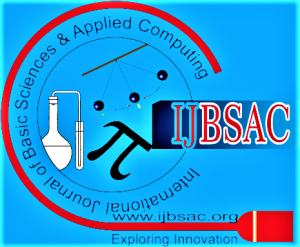![]()
Synthesis and Physicochemical Properties of Coumarin Derivatives as Antimicrobial Agents
Manisha1, Anita Singh2, Pravin K Singh3
1Manisha, Department of Chemistry, Nehru Gram Bharati (Deemed To Be University), Prayagraj (U.P.), India.
2Dr. Anita Singh, Department of Chemistry, Nehru Gram Bharati (Deemed To Be University), Prayagraj (U.P.), India.
3Dr. Pravin K Singh, Assistant Professor, Department of Chemistry, C.M.P. Degree College, Prayagraj (U.P.), India.
Manuscript received on 19 July 2025 | First Revised Manuscript received on 24 July 2025 | Second Revised Manuscript received on 01 August 2025 | Manuscript Accepted on 15 August 2025 | Manuscript published on 30 August 2025 | PP: 1-12 | Volume-11 Issue-12, August 2025 | Retrieval Number: 100.1/ijbsac.L053711120825 | DOI: 10.35940/ijbsac.L0537.11120825
Open Access | Editorial and Publishing Policies | Cite | Zenodo | OJS | Indexing and Abstracting
© The Authors. Blue Eyes Intelligence Engineering and Sciences Publication (BEIESP). This is an open access article under the CC-BY-NC-ND license (http://creativecommons.org/licenses/by-nc-nd/4.0/)
Abstract: A series of new cumarine Schiff base derivatives has been designed using in silico methods and synthesised as potential antimicrobial agents. Furthermore, the compounds were evaluated for their antibacterial and antifungal properties. In silico results indicate that all the compounds adhere to the Lipinski rule of five.
Keywords: Schiff base, ADME, MIC, Molinspiration, Chem Draw, Lipinski’s Rule.
Scope of the Article: Organic Chemistry
